What Weeds Does 2,4-D Kill in Lawn? (List of Weeds)
2,4-Dichlorophenoxyacetic acid (2,4-D) is a herbicide that is widely used to control broadleaf weeds in lawns and crop fields. It comes in two types – ester and amine formulations. Being a systemic broadleaf herbicide, what weeds does 2,4-D kill?
The list of weeds 2,4-D kills includes dandelion, plantain, chickweed, clover, ground ivy, poison ivy, thistle, bittercress, bindweed, and wild onion. You can apply it as a post-emergent herbicide, although in some cases, it works as a pre-emergent for broadleaf weeds. See the complete list of weeds 2,4-D controls below.
For the best results, I recommend using Southern Ag Amine 24-D Weed Killer together with this Non-Ionic Surfactant for Herbicides to increase coverage and herbicide penetration and kill broadleaf weeds in your lawn.
Contents
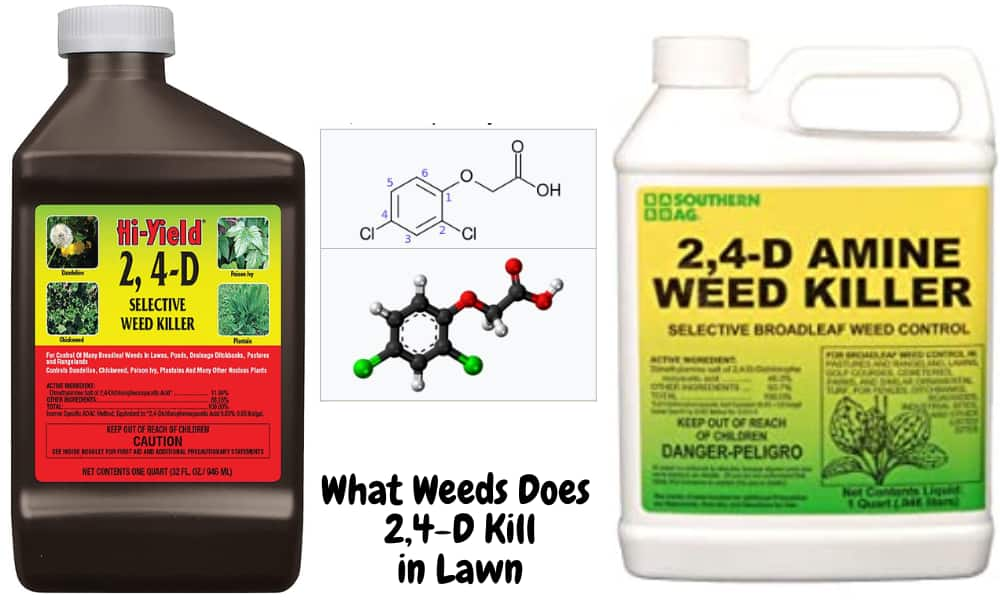
Can you apply 2,4-D on lawns?
2,4-Dichlorophenoxyacetic acid is safe for controlling lawn weeds. Most turfgrass varieties are resistant to the active ingredient. You can, therefore, apply 2,4-D on your lawn to kill a majority of broadleaf weeds. The success rate is much higher when weeds are still young and growing actively.
Being an auxin-type herbicide, 2,4-D controls weeds by altering the way cells and tissues that translocate nutrients and water grow. The chemical forces these cells to grow endlessly, thereby inhibiting their ability to provide the necessary nutrition for the weeds to grow and compete with lawn grasses.
You’ll start to see the 2,4-D herbicides working within 48 hours, although the complete weed kill can take up to 14 days to be complete.
Caution
It is important to read the product label to make sure it is indicated for use on the type of grass you’re growing on your lawn. For instance, Hi-Yield 2,4-D SHOULD NOT be used on St. Augustine grass. It is, however, a safe herbicide for Bermuda grass lawns.
You also want to be careful not to spray 2,4-D on dormant grass. While 2,4-D herbicides won’t kill grass in your lawn, they can cause injury to dormant grass, especially in Bermuda grass turfs.
List of Weeds 2,4-D kills
2,4-D herbicides kill most broadleaf weeds in lawns but not grassy weeds. This makes it safe to apply on lawns infested with weeds. You can also apply it on driveways, gravel areas, fence rows, ornamental turf areas, drainage areas, and patios.
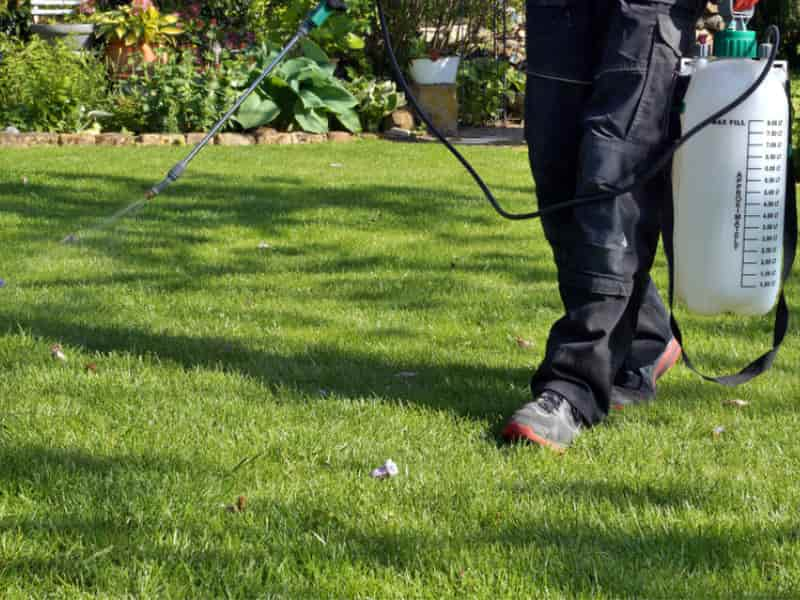
Here’s a list of weeds that 2,4-D kills:
| Box elder | Hemp |
| Water shield | Sweet clover |
| Indigo | Ground ivy |
| Pennycress | Wild onion |
| Plantain | American lotus |
| Knotweed | Bitterweed |
| Goldenrod | Goosefoot |
| Croton | Lupine |
| Honeysuckle | Parrot feather |
| Kochia | Vervain |
| Horsetail | Bittercress |
| Virginia copperleaf | Coffee bean |
| Thistle | Catnip |
| Flixweed | Cockle |
| Arrowhead | Stinkweed |
| Beggartick | Blue lettuce |
| Blessed thistle | Pepperweed |
| Sicklepod | Tumbleweed |
| Buckhorn | Sowthistle |
| Primrose | Southern wild rose |
| Marshelder | Carolina geranium |
| Purslane | Wild rape |
| Water primrose | Jimsonweed |
| Blackeyed | Mustard |
| Muskthistle | Henbit |
| Alder | Orange hawkweed |
| Mexican weed | Dock |
| Bull thistle | Parsnip |
| Sagebrush | Bindweed |
| Lambsquarter | Coffeeweed |
| Witchweed | Morningglory |
| Wild garlic | Speedwell |
| Marijuana | Jenny |
| Toadflax | Jerusalem artichoke |
| Bur ragweed | Duckweed |
| Bullnettle | Carpetweed |
| Flea bane (daisy) | Cinquefoil |
| Canada thistle | Stinging nettle |
| Florida pusley | Water hyacinth |
| Spatterdock | Dogbane |
| Virginia creeper | Devil’s claw |
| Sumac | Poison ivy |
| Sneezeweed | Poorjoe |
| Wormseed | Wild parsnip |
| Nettle | Sunflower |
| Many flowered aster | Russian thistle |
| Wild radish | Locoweed |
| Pokeweed | Frenchweed |
| Susan | Wild carrot |
| Wild strawberry | Rush |
| Velvet leaf | Red clover |
| Broomweed | St. John’s wort |
| Water lily | Ragweed |
| Pigweed | Tarweed |
| Prickly lettuce | Chicory |
| Aster | Puncture vine |
| Indiana mallow | Pennywort |
| Common sowthistle | Creeping |
| Water plantain | Tanweed |
| Goatsbeard | Hoary cress |
| Shepherds purse | Yellow rocket |
| Artichoke | Curly indigo |
| Galinsoga | Alligator weed |
| Nutgrass | Buttercup |
| Vetch | Wild lettuce |
| Shepherdspurse | Salsify |
| Burdock | Dandelion |
| Bulrush | Jewelweed |
| Willow | Povertyweed |
| Mallow | Elderberry |
| Poison hemlock | Gumweed |
| Cocklebur | Healall |
Note that when controlling these weeds with 2,4-D herbicides, take caution not to harm other plants that are not resistant to the formulation to prevent injury.
As a rule of thumb, do not spray when it is windy because the herbicide can spread and cause injury to desirable crops near your lawn.
Can 2,4-D kill crabgrass?
2,4-D does not kill crabgrass because it is indicated for broadleaf weeds. Crabgrass is a grassy weed that is typically tough to control in lawns. 2,4-D herbicides are safe for most grass species and won’t have any effect on crabgrass and many other grassy weeds.
The best way to get rid of crabgrass is to apply a selective crabgrass killer herbicide that won’t harm your lawn.
A great herbicide to use as a pre-emergent and post-emergent for crabgrass control is Tenacity Turf Herbicide, which does a great job at controlling crabgrass, nutsedge, and a few other grassy weeds in lawns.
Weeds that 2,4-D WON’T Kill
Apart from the obvious noxious invasive weeds that are tough to control in lawns – such as crabgrass – there are a few other weeds that 2,4-D won’t kill. Most grassy weeds are resistant to herbicides, with 2,4-D as the active ingredient. You will need a specialized selective post-emergent herbicide to control grassy weeds in your lawn.
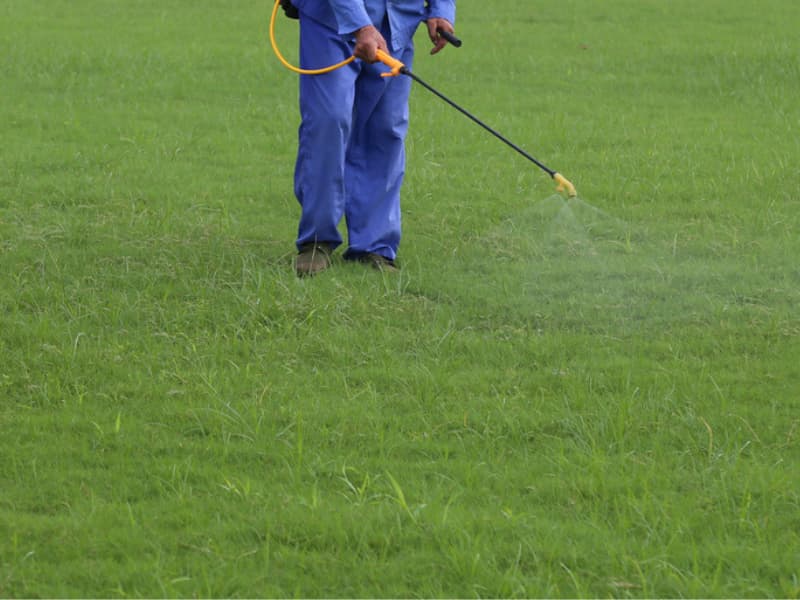
Here’s a list of weeds that 2,4-D won’t kill:
- Quackgrass
- Foxtail Goldenrod
- Annual bluegrass
- Nutgrass
- Bluegrass
- Canada thistle
- Crabgrass
- Dog fennel
- Pineapple weed
- Goosegrass
- Horsetail
- Mullein
- Oxalis (red)
- Italian ryegrass Johnson grass Milkweed
- Ripgut grass Russian knapweed
- Wild barleys
- Saltbush Sandbur
- Bracken fern Buttonwillow
- Soft chess Tansy ragwort
- Alkali mallow
- Poison oak
- Watergrass
- Baby tears Bermuda grass Blackberry
- Wild oats Yarrow
While 2,4-D herbicides are great for killing broadleaf weeds in lawns, rangelands, fences, cemeteries, etc., you may need to spray the weeds twice for the desired control.
To prevent injury to lawn grass, apply at the recommended application rate for 2,4-D. Excessive application of 2,4-D herbicides will harm even your grass. St. Augustine grass and Kentucky Bluegrass are some of the desirable grasses that are susceptible to injury when sprayed with 2,4-D herbicides.
Sources and References
- South Dakota State University, South Dakota Agricultural Experiment Station: Killing Weeds with 2,4-D
- NCPIC – National Pesticide Information Center: 2,4-D General Fact Sheet
- Amit Jhala and Lowell Sandell, University of Nebraska Institute of Agriculture and Natural Resources: Recommendations for Pre-plant and Pre-emergence Weed Control

![How to Get Rid of Crabgrass [FOR GOOD] Spring to Summer Control](https://lawnmodel.com/wp-content/uploads/2020/11/How-to-Get-Rid-of-Crabrass-for-good-spring-to-summer.jpg)
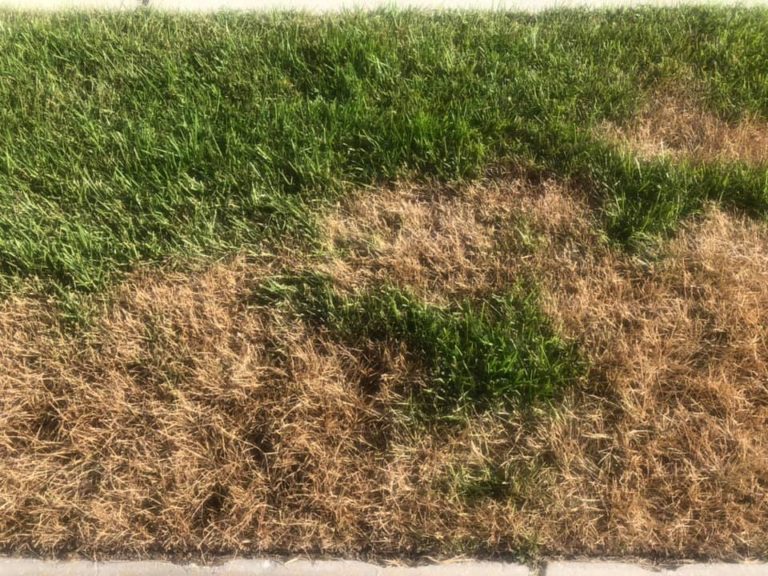
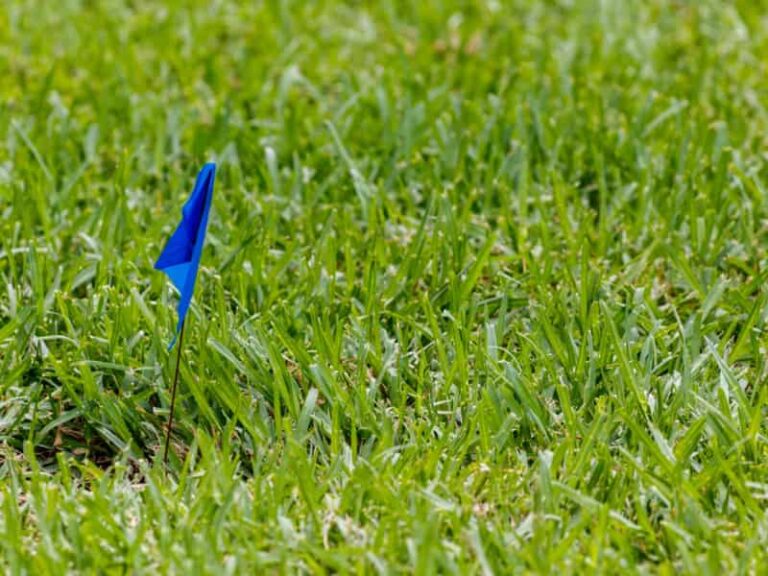
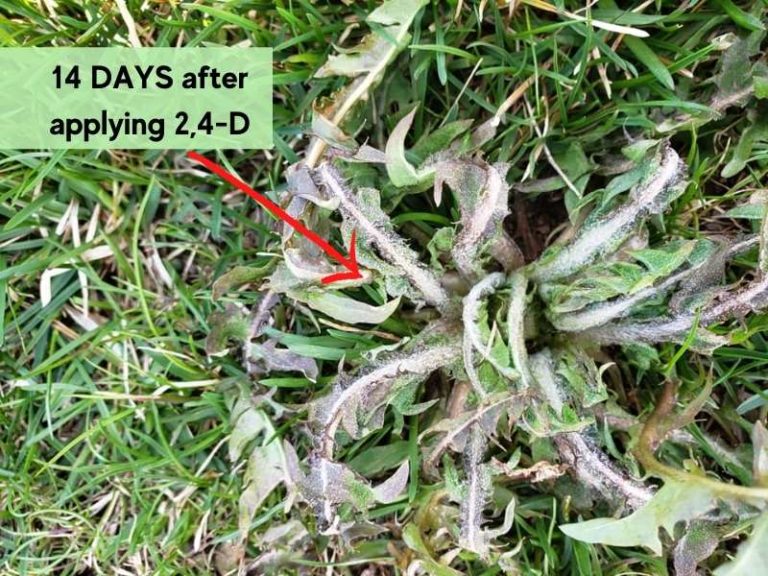

will this kill wild violets
Hello Brinda, 2,4-D or Dicamba, is good for use in broadleaf weeds. Although it provides limited control, It will selectively kill the violets without damaging the grass. The best products are those that contain triclopyr (Turflon, Ester, Confront, Cool Power, Horsepower, Weed-B-Gon Weed-B-Gon Chickweed, Clover & Oxalis). They are much more effective when used at the highest recommended rate.